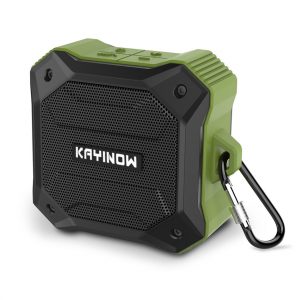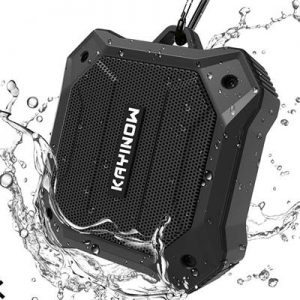🔊 Material and Acoustic Design of Bluetooth Speakers
Behind every impressive Bluetooth speaker lies the perfect balance between design aesthetics and acoustic science. The choice of material directly shapes the sound character, durability, and brand identity. Understanding how a Bluetooth speaker factory combines materials and engineering helps you develop products that both look and sound exceptional.
🧱 1. The Role of Material in Speaker Design
The outer shell is not just for protection — it’s the core of acoustic structure. Materials like ABS plastic, aluminum, and silicone each affect sound reflection, resonance, and frequency response.
ABS is affordable and durable, while aluminum offers a premium finish and better heat dissipation. Factories often blend materials to achieve the best balance of cost, strength, and tone.
🪵 2. Plastic, Metal, or Fabric — What’s the Difference?
Plastic housings are lightweight and ideal for portable Bluetooth speakers. However, they can introduce unwanted resonance if too thin.
Metal enclosures deliver richer bass and reduce vibration but add weight.
Fabric wraps are increasingly popular for lifestyle products, providing a warm, tactile surface while allowing sound waves to pass through smoothly.
🎧 3. Acoustic Chamber Design and Sound Flow
The internal chamber defines how sound waves move and amplify. Engineers carefully design the internal volume, vent holes, and driver placement.
For compact speakers, dual passive radiators or rear ports enhance bass depth.
Acoustic foam or dampening material is added inside to reduce distortion and control resonance.
🧩 4. Driver and Component Selection
The driver is the heart of every Bluetooth speaker. Manufacturers select units based on size, impedance, and magnet type.
Small 40mm drivers work well for portable speakers, while larger 52mm units create stronger bass.
Combining full-range drivers with passive radiators ensures powerful low-end response in compact enclosures.
🔋 5. Battery Placement and Acoustic Stability
Battery position matters more than most realize. Poor placement can block airflow or cause imbalance in sound direction.
Experienced Bluetooth speaker manufacturers mount batteries symmetrically or behind sound barriers to prevent vibration interference, ensuring stable acoustic output even at high volumes.
🧠 6. Circuit Board and Bluetooth Module Layout
Electronic components also affect acoustic quality. The PCB layout determines how signals travel to amplifiers and drivers.
Factories shield sensitive parts to prevent electrical noise.
Bluetooth 5.0 modules improve transmission speed and reduce latency, ensuring the sound remains synchronized and clean.
🧪 7. Surface Finishing and Resonance Control
The surface finish not only defines appearance but also influences micro-vibration.
Matte and rubberized finishes absorb vibration slightly, while glossy coatings tend to reflect more sound energy.
Premium factories perform vibration testing to fine-tune these subtle acoustic effects.
🖋️ 8. Branding Through Design and Acoustics
Great brands use sound design as part of their identity.
A custom Bluetooth speaker manufacturer can tailor acoustic profiles — such as emphasizing vocal clarity or deep bass — to match your market segment.
Combined with logo placement and material selection, the product becomes a sensory extension of your brand.
🌍 Final Thoughts
Material and acoustic design are inseparable in Bluetooth speaker development. The best products blend creative design, solid engineering, and careful material science.
By working with an experienced factory that understands both aesthetics and acoustics, you ensure your Bluetooth speakers deliver not just sound — but emotion, style, and lasting quality.














